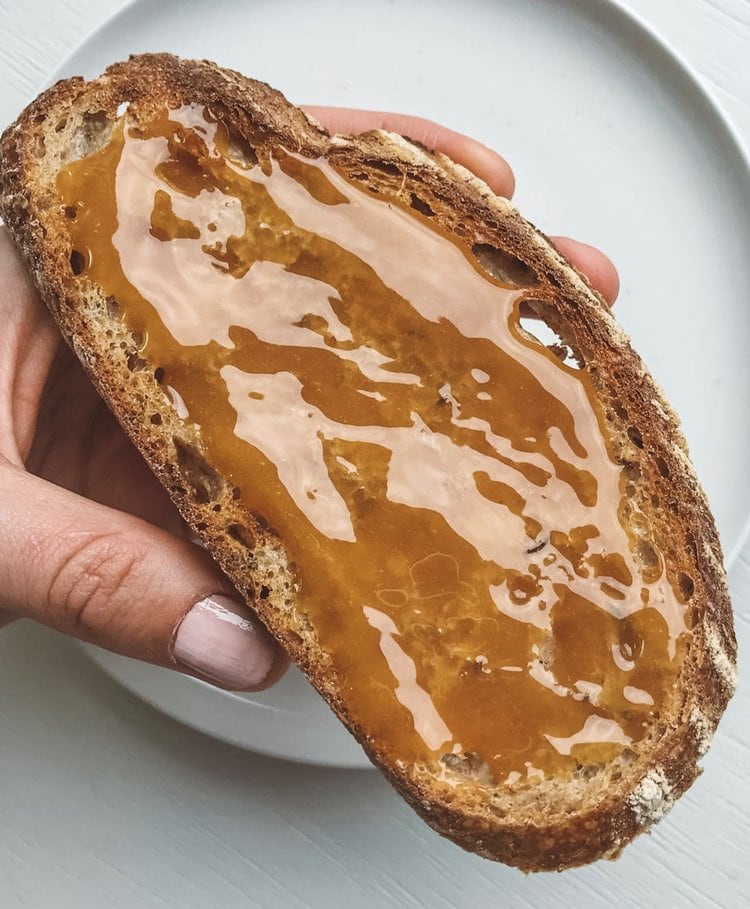
Mānuka is a monofloral honey (honey made from the nectar of one plant), produced from the mānuka tree. This tree is indigenous to NZ and strongly intertwined into Maori traditional and natural medicine.
It has an impressive reputation regarding potential health benefits, particularly antibacterial power, supported by an extensive range of scientific studies. Here, an industry-led standard has been developed to grade a mānuka’s purity and quality, known as the UMF or MGO rating, found on a product’s label. As the rating on the jar increases (e.g. UMF10+ UMF 12+…) so does the antibacterial power of the honey.
Mānuka is markedly viscous; with a golden amber colour. It has a characteristic aroma, a mix of nutty, damp and earthy, and is, of course, sweet – but with a slightly bitter aftertaste.
In the kitchen, spread it the classic way on toast, use in baking to sweeten and add depth of flavour; mix into drinks, like a hot lemon ginger over winter; or even just enjoy a sneaky teaspoon direct from the jar. We’ve all done it.
Find jars all over NZ, in supermarkets, speciality or tourism shops, and of course your favourite Kiwi’s pantry.


Leave a Comment
No Comments